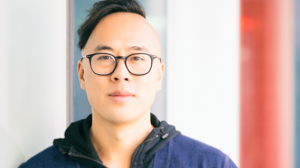

Dr. Adam Sandford found an interest in psychology quite early in life. He was only 16 when he took his first course during high-school in the United Kingdom, and that inspired him to continue studying psychology at the University of Kent. By the end of his second year, Dr. Sandford had already recognized the area that interested him: faces.
Dr. Sandford, who would go on to complete a BSc (Hon.) in Psychology and a Ph.D in Psychology from the University of Aberdeen before becoming the University of Guelph-Humber’s Psychology Assistant Program Head, became interested in the following years in how human beings recognize, perceive and process faces.
In collaboration with Dr. Markus Bindemann, Dr. Sandford began doing research into why people could look at different photographs of the same person and recognize that person with vastly varying degrees of success. Although most people are confident in their ability to recognize faces based on photographs, in fact standardized face recognition tests typically yield results ranging from 50 per cent to 100 per cent accuracy.
“We encounter faces every day, so we assume we would be able to perform the task,” Dr. Sandford explained.
In fact, it’s much more complex than that. Dr. Sandford’s currently interested in “configural processing,” the process by which people remember other faces not just by their individual features but the distance between those features. Dr. Sandford’s recently looked at whether digitally distorting and changing the distances between those features can impair a person’s ability to recognize even a very familiar face.
Dr. Sandford, who was recently elected Chair of the Brain and Cognitive Sciences section of the Canadian Psychological Association, points out that modern literature on face recognition dates back only 40 years or so. Still, in his years of work studying faces, he notes that he’s no better than anyone else at succeeding in these face recognition tasks.
“It’s just as difficult as it was back in 2011,” he said with a laugh.





